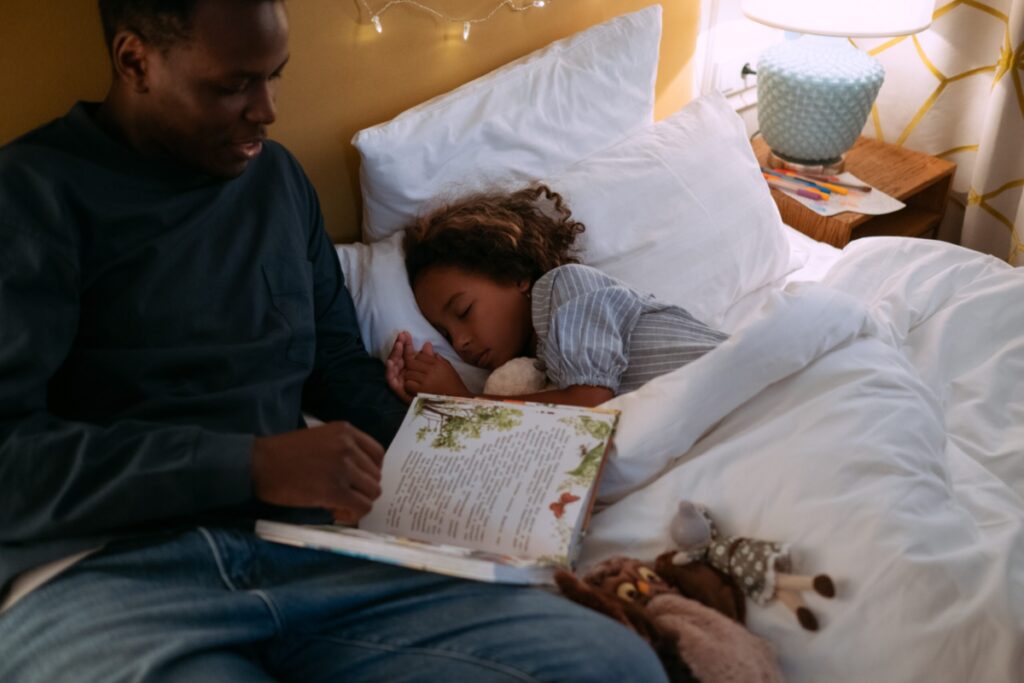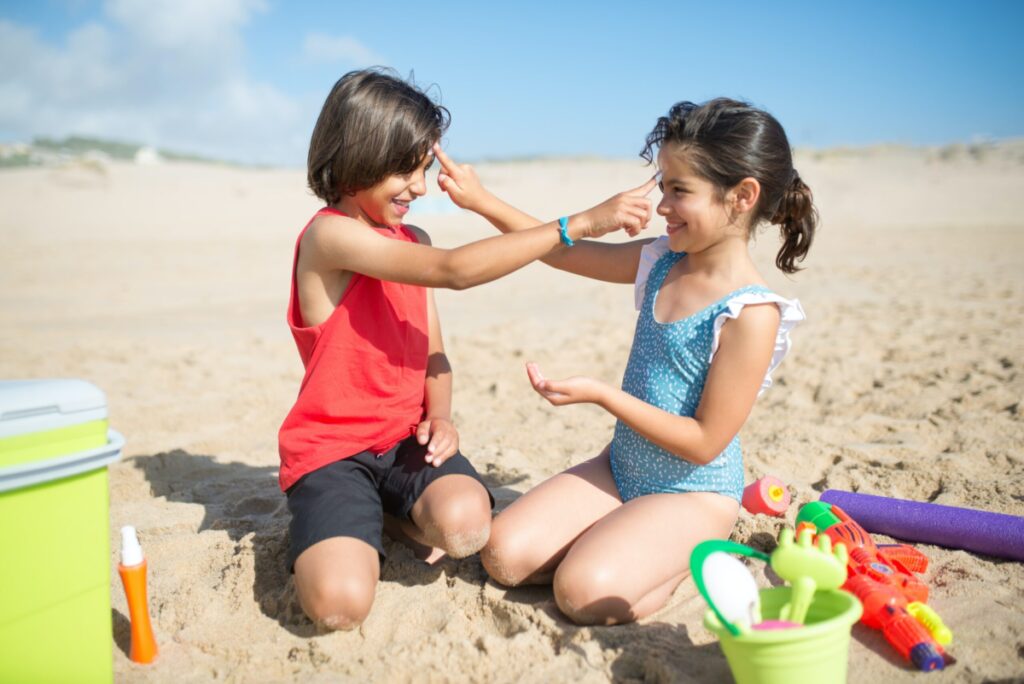Five tips to promote better sleep
Most kids are back to school now, and many of us parents are still trying to get everyone back into the swing of things! After a fun summer, sleep schedules and routines may have fallen off a bit. We know sleep is essential for overall well-being and mental health, but it can be hard to know how to get our kids and ourselves back on track. Have no fear. Here are five tips to promote better sleep to help the whole family thrive this school year! Keep in mind these tips apply to parents’ sleep too!
Timing is everything!
- Set a consistent sleep and wake time.
- Having a consistent wake and bedtime helps regulate circadian rhythms and promote better sleep.
- Circadian rhythms are 24-hour cycles that are part of the body’s internal clock to carry out essential functions including sleep and wakeful periods.
- Aim for around the same bedtime every night and get up around the same time every day +/- 20-minutes.
- Yes, this means avoiding letting kids stay up super late and sleep late on the weekends! But you can allow a little wiggle room for the occasional weekend, vacations, or special events.
- The point is not to feel stressed or guilty when things fall off the schedule but to aim for consistency whenever possible, so it becomes second nature.
- Read here for more info on how much sleep your child needs based on age.
Fill up their cup!
- A big part of promoting quality sleep is getting enough daylight, activity, and good nutrition during the day!
- There is evidence that exposure to daylight, especially before 10 am helps regulate circadian rhythm and promote better sleep.
- Better sleep is just one of the many reasons to ensure your kids get at least 60 minutes of active play daily!
- Good nutrition helps regulate blood sugar, avoid energy crashes during the day, and fills up those tummies so they can be comfy and content for sleep. Offer three meals and two snacks daily that include some protein and healthy fats in addition to fruits and veggies.
- If bedtime is more than 2 hours after dinner, then you may want to offer a healthy bedtime snack that includes a complex carbohydrate and protein as part of your routine—for example, whole wheat crackers and peanut butter.
Develop a bedtime routine!
- Bedtime routines help prime us for sleep and wind down after a busy day.
- If having a bedtime routine sounds daunting, don’t stress. You do not have to have an elaborate ritual for this to work!
- A few simple activities that happen every night in roughly the same order are all it takes.
- For example, after dinner, kids play quietly for 30 minutes, then take a bath, change into PJs, brush their teeth, read books, sing a bedtime song, and put to sleep.
- Did you know that there is science behind the bath part of the bedtime routine? Studies show passive warming from a shower or bath before bed promotes better sleep quality and efficiency!
Set the scene!
- Help create a welcoming sleep environment to optimize sleep.
- The key factors are darkness, temperature, and limiting ambient noise.
- Light is one of the main factors affecting circadian sleep rhythms!
- A darker room promotes better sleep, so consider blackout curtains if your child has windows that let in excess light.
- Ideal temperatures for sleep are between 68 and 72 degrees. You should also adjust PJ choices, so kids aren’t too chilly or overheating.
- White noise, soothing music, or nature sounds can be a great way to relax and drown out ambient sounds for sleep.
- Research studies have also shown soothing scents like lavender or chamomile to help promote sleep.
Avoid screen time before bed!
- The light from screens and stimulation from shows or games can interfere with, you guessed it, circadian rhythms and make it hard to wind down for sleep.
- A good family rule is no screens 60 minutes before bed. For teens and adults to leave phones outside their bedrooms and use an old fashioned alarm clock as an alarm instead.
Hope these tips help the whole family get some more zzzs! If you have concerns about your child’s sleep or possible sleep disorders, talk to your healthcare provider. Check out these resources for more info!
Sleep Foundation – Light and sleep
Healthychildren.org – Healthy sleep habits



